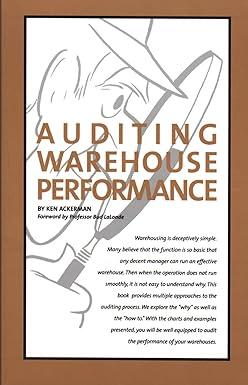



E11-28. Analyze, Forecast, and Interpret Income Statement and Balance Sheet Following are the income statement and balance sheet of Whole Foods Market Inc. WHOLE FOODS MARKET INC. Consolidated Statements of Operations Fiscal Years Ended (in millions) Sept 25, 2016 Sept 27, 2015 ....................DIO, TVIU,VOJ Sales.. .... $15,724 $15,389 Cost of goods sold and occupancy costs ....... .... 10,313 9,973 Gross profit ............................. ...5,411 5,416 Selling, general and administrative expenses........ ....4,477 4,472 Pre-opening expenses ....... ..... 64 67 Relocation, store closures, and lease termination costs......... 13 Operating income ........... .. 857 861 Interest expense.... ....(41) Investment and other income. ....... .... 11 Income before income taxes...... .827 878 Provision for income taxes........ ... 320 Net income ..................... $ 507 $ 536 ........... 342 WHOLE FOODS MARKET INC. Consolidated Statements of Operations September 25, 2016 September 27, 2015 In millions 199 3,163 ........40 Assets Current assets Cash and cash equivalents......... .....$ 351 $ 237 Short-term investments available-for-sale securities.. ....... 379 155 Restricted cash. ............... .. ........ 122 127 Accounts receivable .......... ...... 242 218 Merchandise inventories........... ........517 500 Prepaid expenses and other current assets ................... 167 108 Deferred income taxes.... . ................ 197 Total current assets ........ ........1,975 1,544 Property and equipment, net of accumulated depreciation and amortization........ 3,442 Long-term investmentsavailable-for-sale securities ... 63 T ES............. Goodwill........ ....................... 710 710 Intangible assets, net of accumulated amortization..... .....7479 Deferred income taxes......... ........ 100 144 Other assets ....... Total assets. ......... $6,341 $5,741 Liabilities and Shareholders' Equity Current liabilities Current instaliments of long-term debt and capital lease obligations ........ .................. $3 Accounts payable ......... ........ 307 295 Accrued payroll, bonus, and other benefits due team members....... ....... 407 Dividends payable ........ ............................43 45 Other current liabilities............. ........... 581 Total current liabilities...... ....... 1,341 1,252 Long-term capital lease obligations, less current installments. . . . . . 1,048 62 Deferred lease liabilities... ...............640 587 Other long-term liabilities ...................................88 Total liabilities. ....3,117 1,972 Shareholders' equity Common stock, no par value, 1,200 shares authorized: 377.0 and 377.1 shares issued: 318.3 and 348.9 shares outstanding at 2016 and 2015, respectively. ..... ... 2,933 2,904 Common stock in treasury, at cost, 58.7 and 28.2 shares at 2016 and 2015, respectively. ......... .... (2,026) (1,124) Accumulated other comprehensive loss... . (32) (28) Retained earnings ......... .2,349 Total shareholders' equity........ 3,224 3,769 Total liabilities and shareholders' equity......... $6,341 $5,741 $3 436 2,017 Required a.Forecast the 2017 income statement for Whole Foods using the following forecast assumptions, which are expressed as a percentage of sales unless otherwise noted ($ in millions). Sales growth. .......... Cost of goods sold and occupancy costs.. Selling, general and administrative expenses............ Pre-opening expenses ....... Relocation, store closure and lease termination costs...... Interest expense......... Investment and other income..... Provision for income taxes as a percentage of pretax income. ......1% .65.6% 28.5% 0.4% ..... $0 .. No change No change . 37% b.Forecast the 2017 balance sheet for Whole Foods using the following forecast assumptions ($ in millions). . . Accounts receivable/Sales....................... Merchandise inventories/Sales ............................ Prepaid expenses and other current assets/Sales....... Deferred income taxes (current assets)/Sales. ... Deferred income taxes (noncurrent assets)/Sales.... Accounts payable/Sales........ Accrued payroll, bonus and other benefits due team members/Sale: Other current liabilities/Sales ....... Depreciation expense as a percentage of PPE, net, at start of the yea CAPEX and development of new properties (all PPE) as a percentage of Sales. Amortization of intangible assets.. Dividends payable as a percentage of dividends. Long-term debt repayment due in 2017... . Long-term debt repayment due in 2018.... Increase in treasury stock in 2017... Dividends as percentage of net income... ............. 1.8% .....3.3% .... 1.1% .... 1.3% ....0.6% ..... 2.0% .... 2.6% ..3.7% .... 15.0% ....5.0% ..... $6 . 25.0% .... $3 .... $65 $200 .... 30.0% . . . Assume no change for goodwill, other assets, deferred lease liabilities, other long-term liabilities, common stock, and AOCL. c. What does the forecasted adjustment to balance the accounting equation from part a reveal to us about the forecasted cash balance and related financing needs of the company










